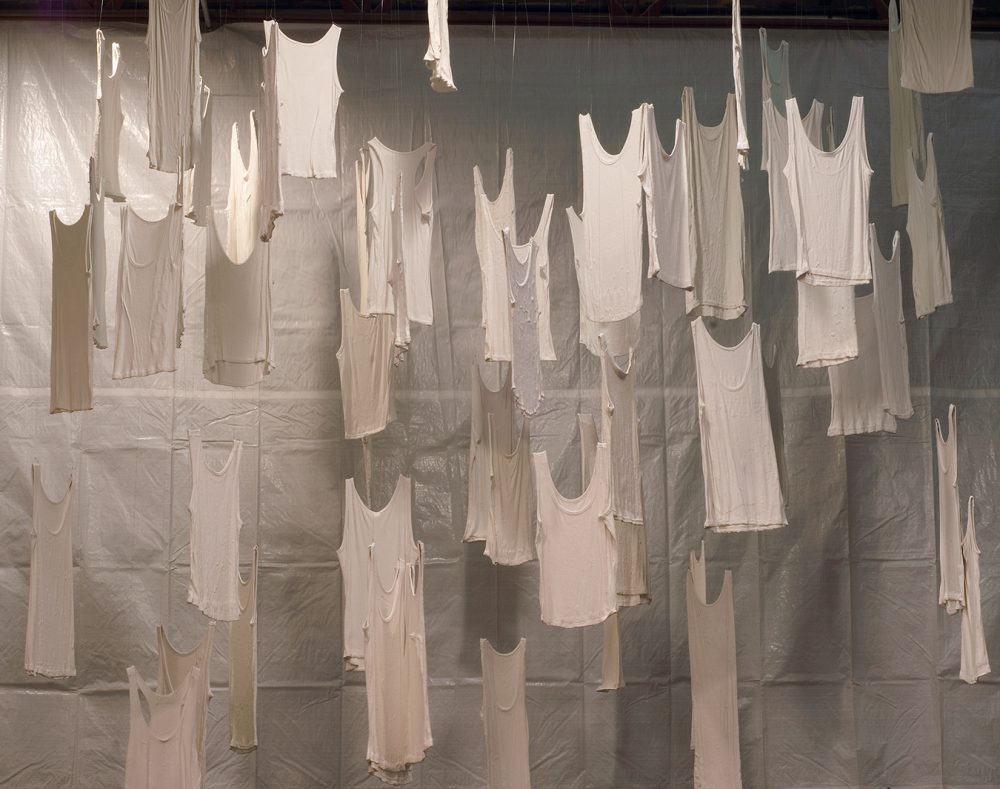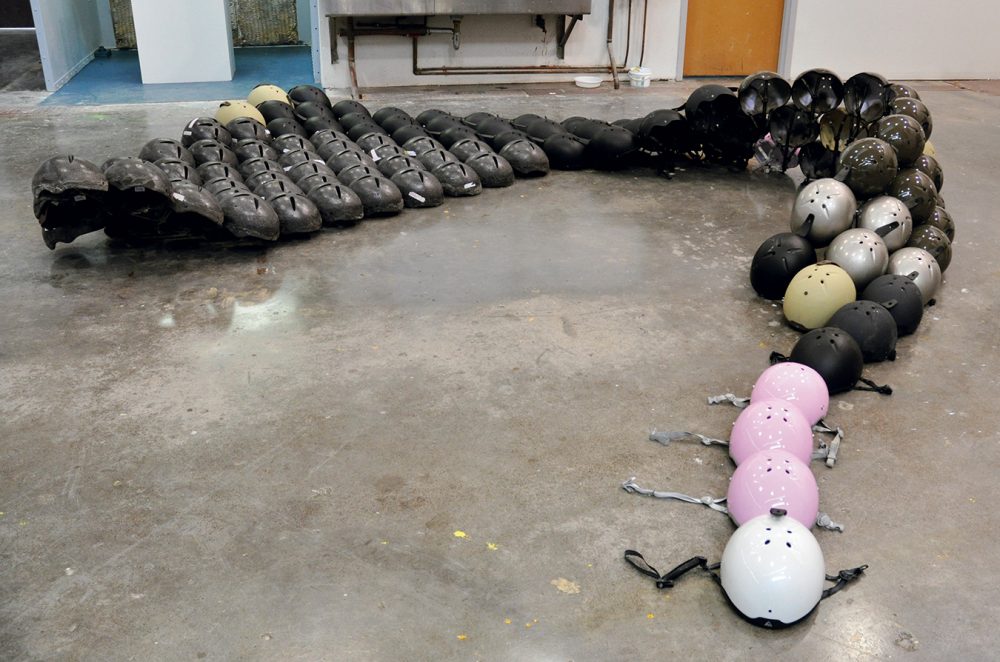It must be a very difficult thing to go to school to study the making of art. The courage it takes to communicate ideas and turn internal thoughts into a creative work is astounding. So it was with great admiration that I toured around the recent graduation exhibitions at Emily Carr University of Art + Design, Simon Fraser University, and Capilano University.
Emily Carr University of Art + Design holds the largest of all local grad shows and has turned out an impressive pedigree of artists over the years, including the famed Young Romantics of the 1980s. So it was with no surprise that I spotted a number of well-known curators and gallery owners at the Emily Carr preview night—all of which were hoping to discover the next Graham Gillmore or Attila Richard Lukacs. This year, the 2011 Degree Exhibition showed an incredible 306 pieces.
It was the drawing work that I gravitated to, and enjoyed the most, at Emily Carr. Anne Palmer and Liz Toohey-Wiese’s works leaped off the wall at me. Palmer’s use of spaghetti-like strings of ink on paper sucked me into her world of abstract fantasy, a kind of intricate patchwork, saturated with unpredictable twists and turns. Her work casts a dizzying spell.
Toohey-Wiese’s Repeat is quite the opposite. Vertical, angled and horizontal lines of graphite are used to create rough landscape sketches, so simple and beautiful in their execution that they provide an escape from the noise around them. Of her work, Toohey-Wiese has said, “Sometimes I create artwork in order to preserve the memory of places and people I meet, and other times I create artwork in order to create a reality that is reflective of a world that never existed.” Toohey-Wiese’s drawn landscapes are certainly environments that I would want to visit again and again, and did during the course of the show.
Over at Simon Fraser University’s Audain Gallery, which recently opened at the Woodward’s complex, the graduation exhibition, Grad Show 2008, was much smaller, with just 12 graduates showing. Of them, more than half created sculptural or installation work. However, it was Jason Wang’s Rise and Fall that, to me, was most impactful. What appeared as a soft, flowing pale blue sheet of fabric, jutting directly out of the wall and cascading into a pool on the floor about 10 feet below, took on a sinister quality to me, once I realized it was actually stiffened with collagen derived from the skin and bones of animals.
It came as no surprise then, that sculpture was also the leading form of work at the Studio Art Grad Show at Capilano University—and impressive sculpture at that. Perhaps this will become a future direction in British Columbia’s contemporary art scene. Navigating my way towards the exhibition at Capilano, I walked past tables covered in clay. I could immediately sense this was a working studio first, and a gallery second. Inside the exhibition space I was confronted by two large-scale works, the first, a hanging mobile of white tank tops by Dorothy Doherty, called All My Relations. The grouping of nearly 50 shirts hung at various lengths, twisting and twirling naturally from their lines. Upon closer look it was clear that these were not shirts at all, but plaster casts, giving them an unexpected rigidity. From her artist statement, Doherty explains that she is attempting to eliminate things that distinguish us, such as race, class, and gender, by giving everything the same surface and colour.
Further into the space was Kim Cooper’s Viral Landscape, a large floor installation constructed completely from carbon-fiber ski helmets, some with straps, some without. The undulating structure reminded me of a work exhibited in New York several years ago by Tara Donovan, Untitled (Plastic Cups). Here, the flowing form is starkly contrasted by the utilitarian helmets that compose it, but like Donovan’s aesthetic, Cooper’s Viral Landscape looks strangely natural. It leaves the viewer with the sense that anything can be beautiful or provocative in the hands of artist able to turn the ordinary into something extraordinary.












